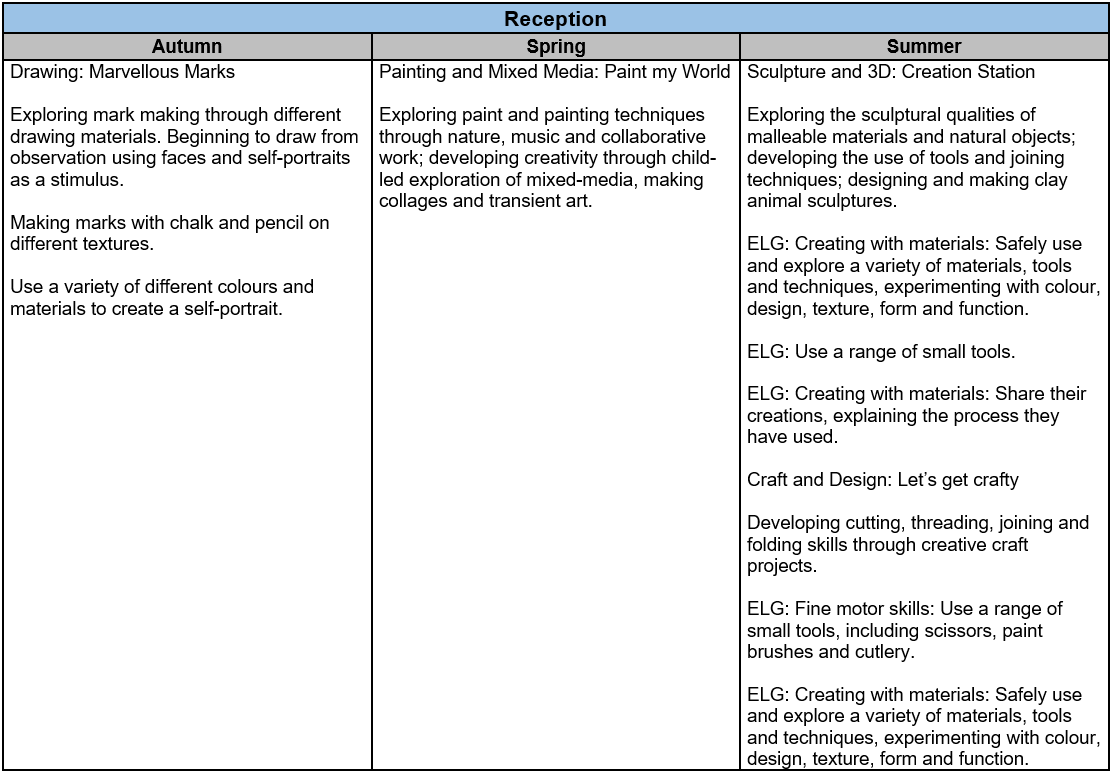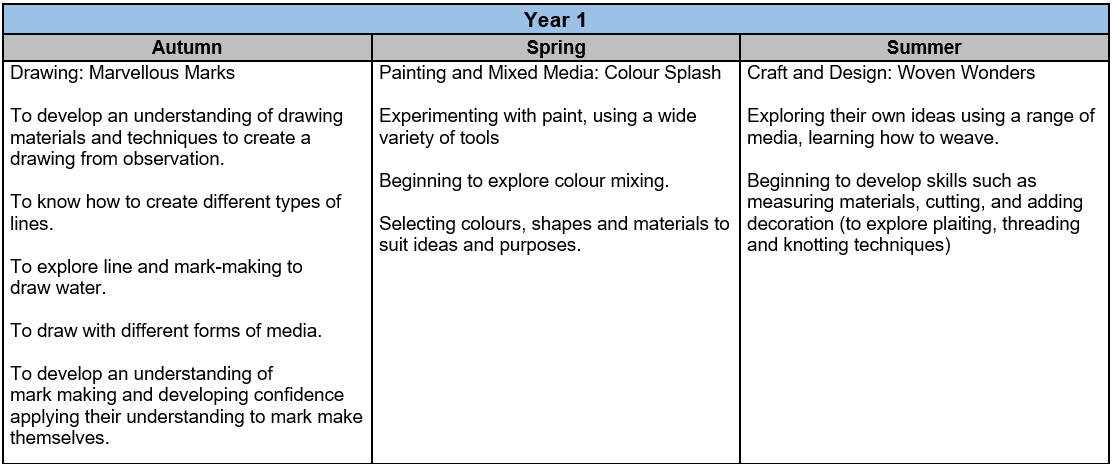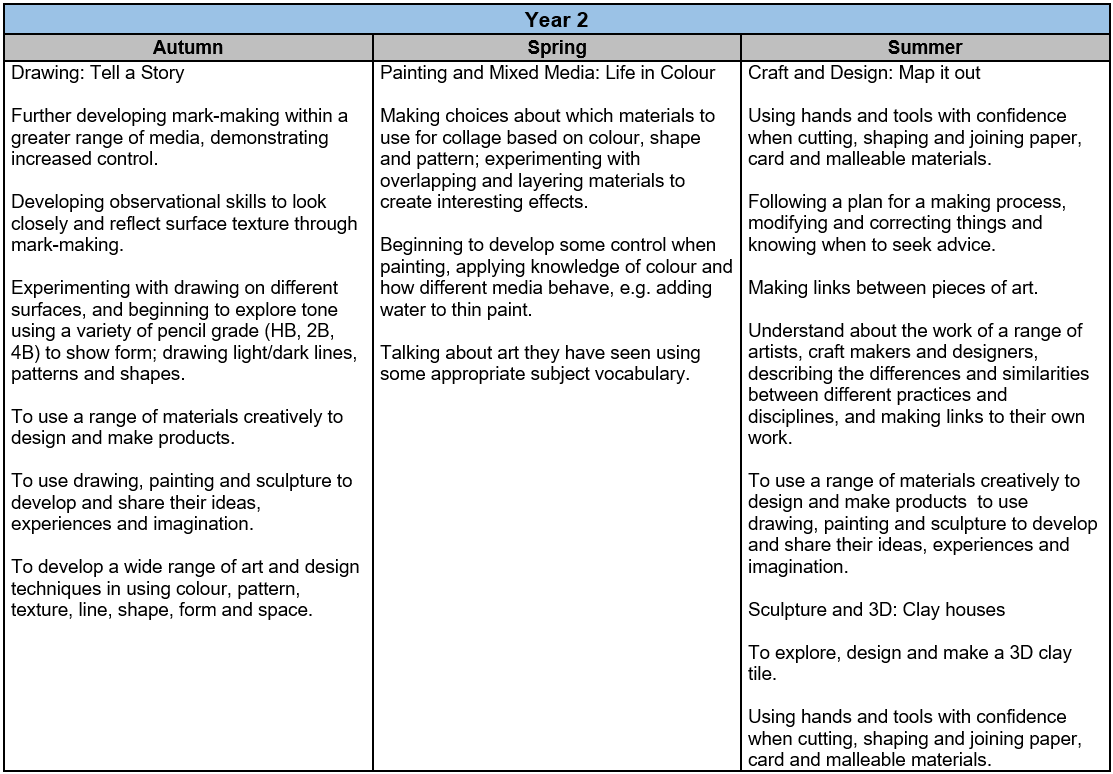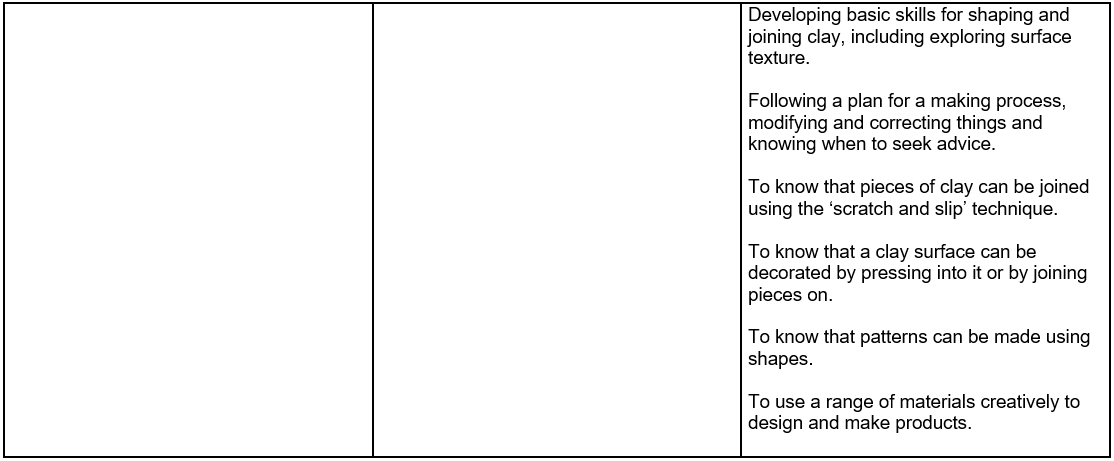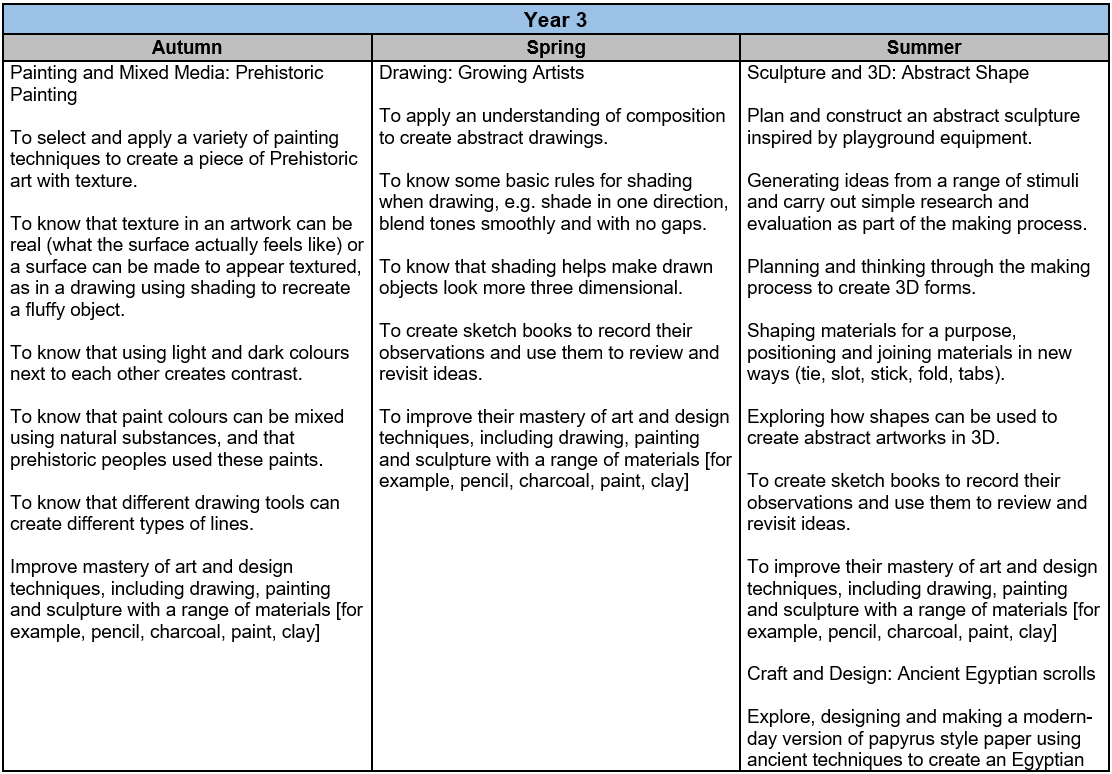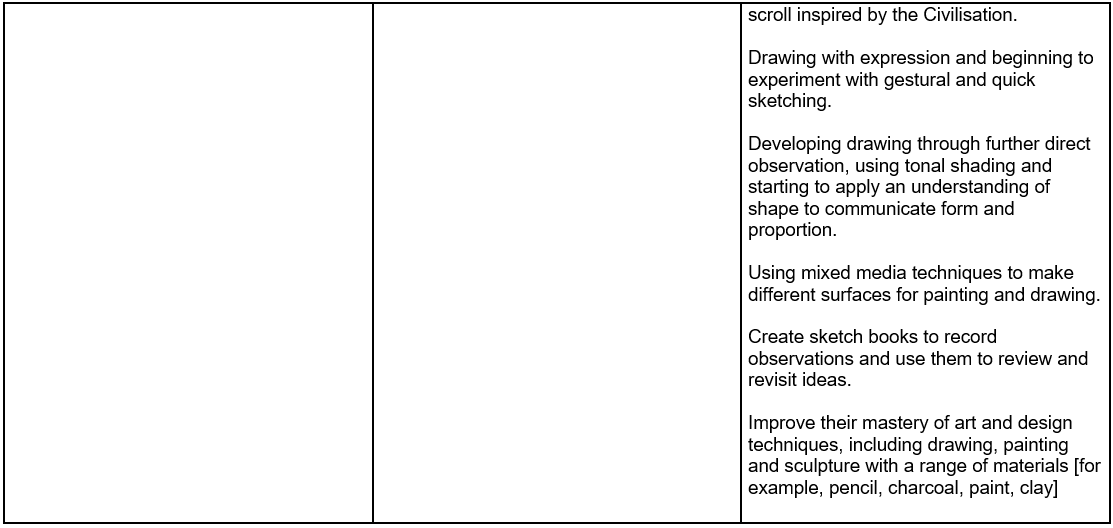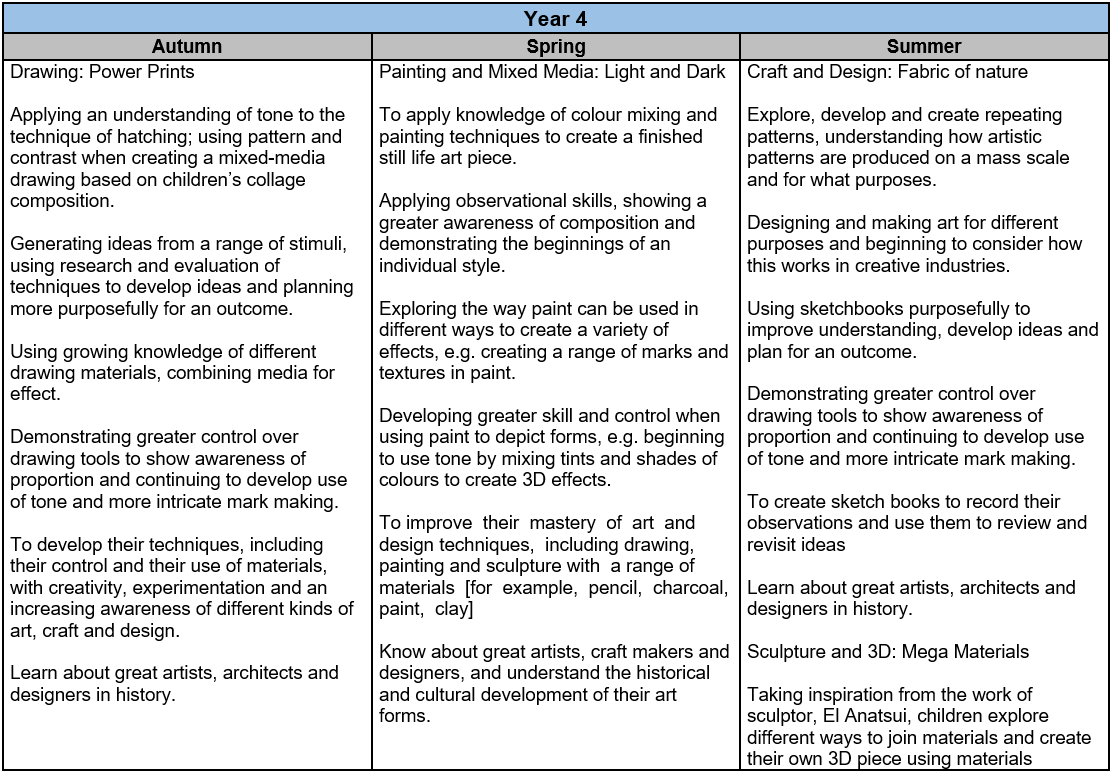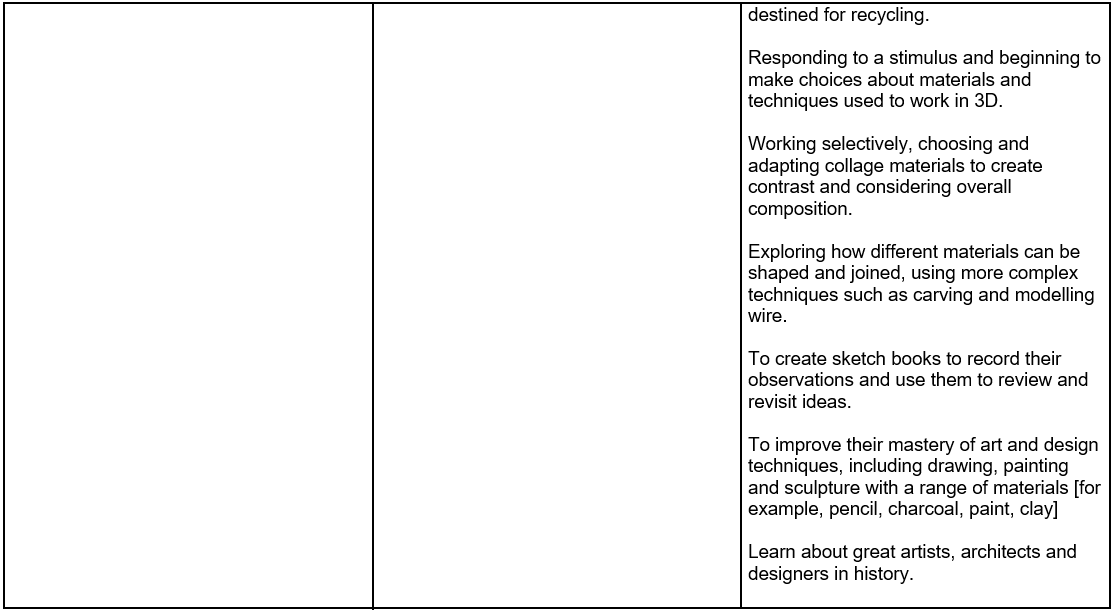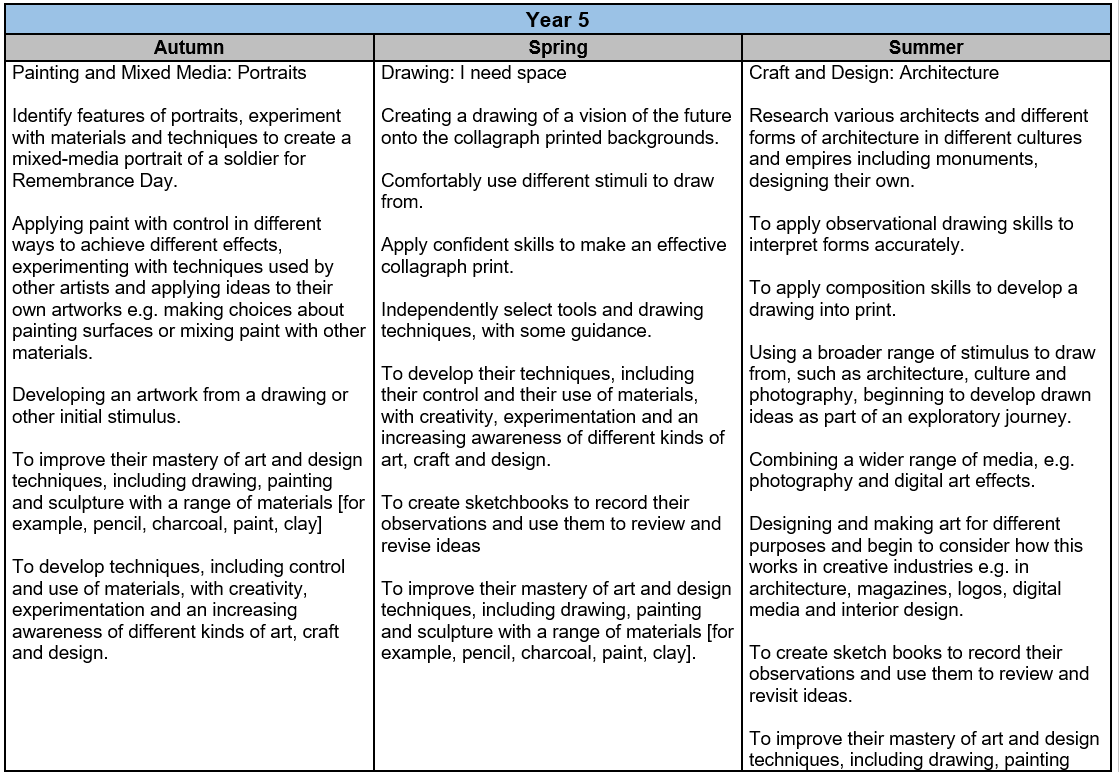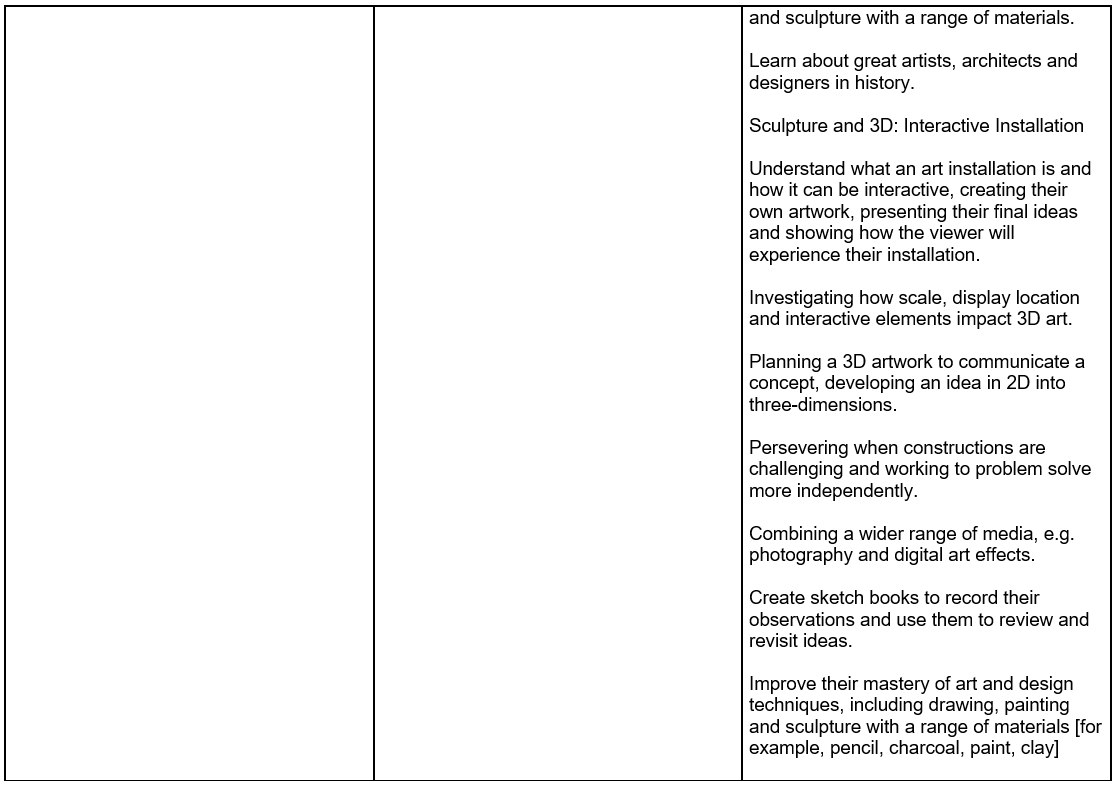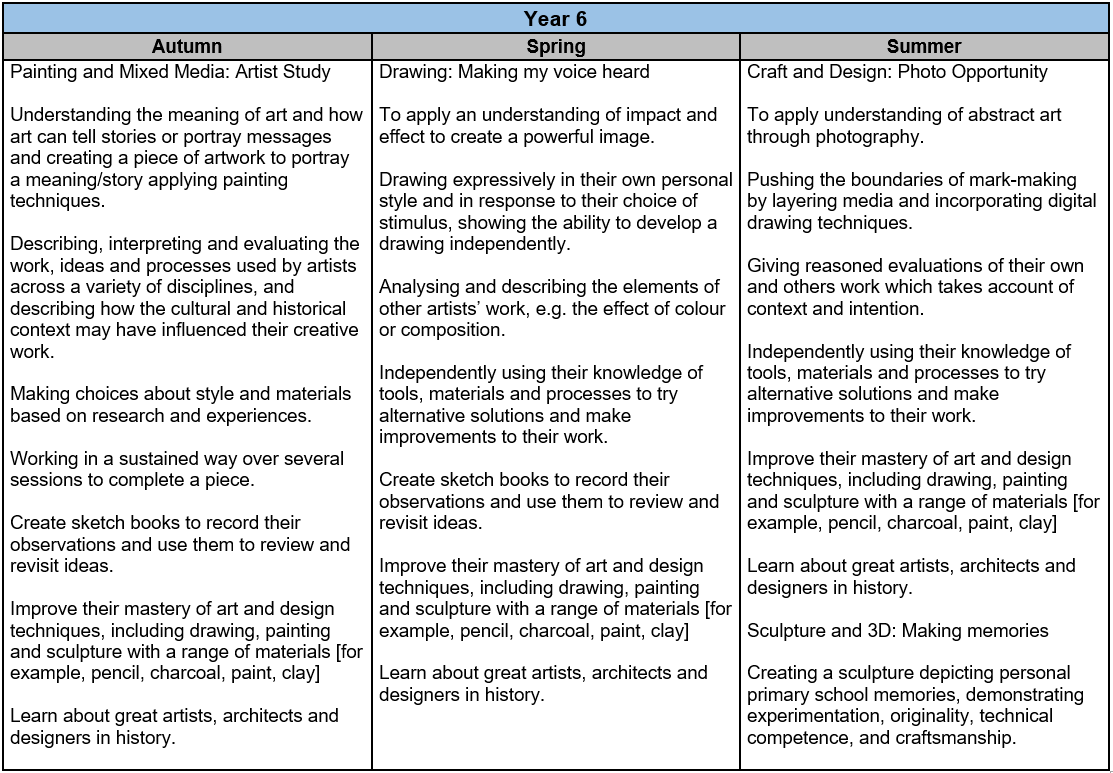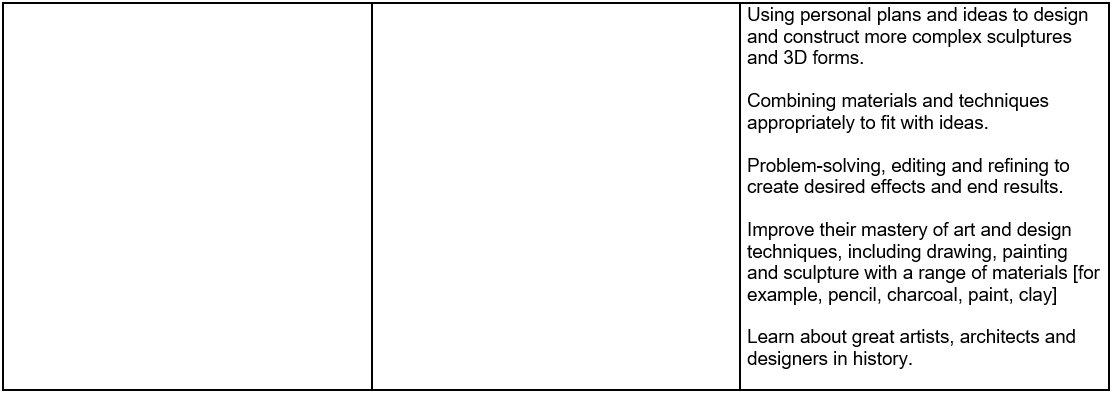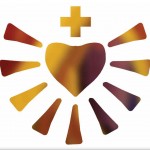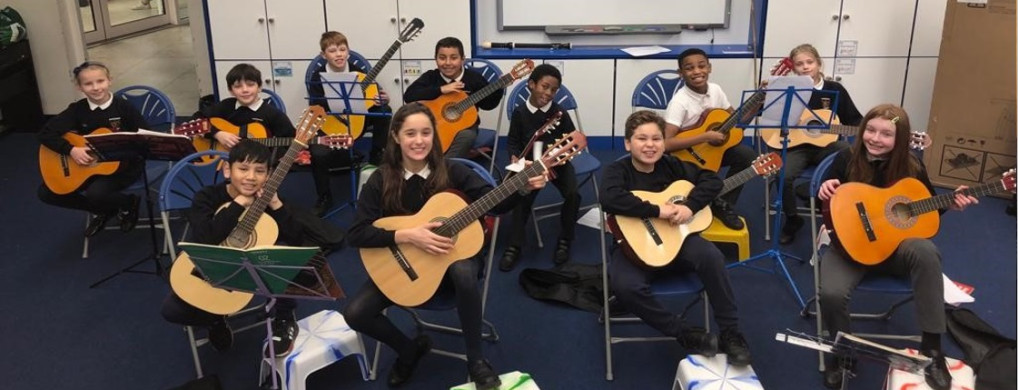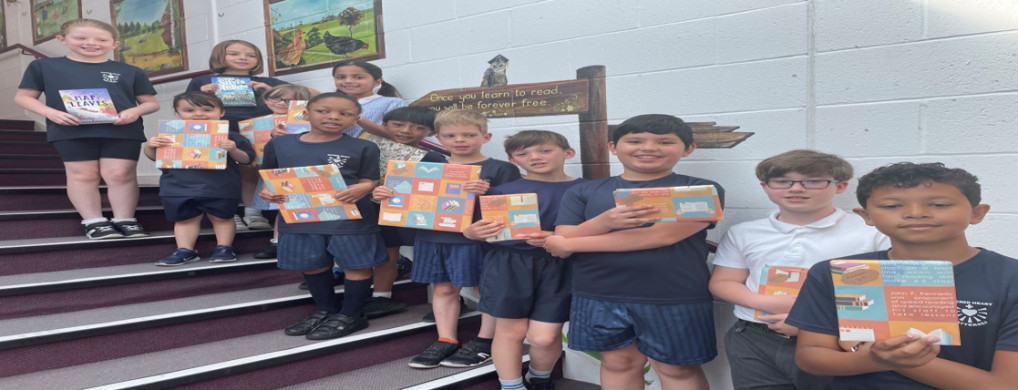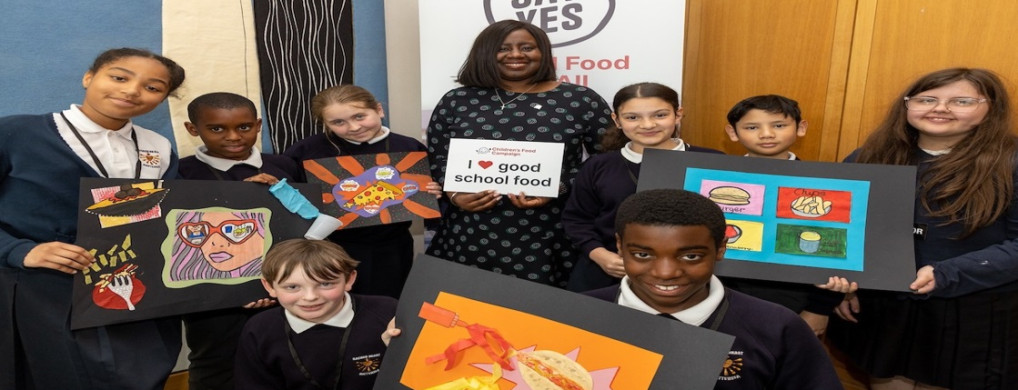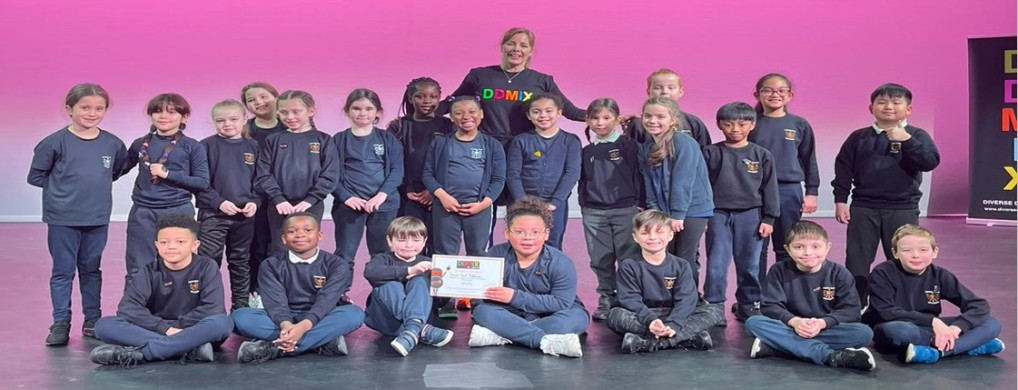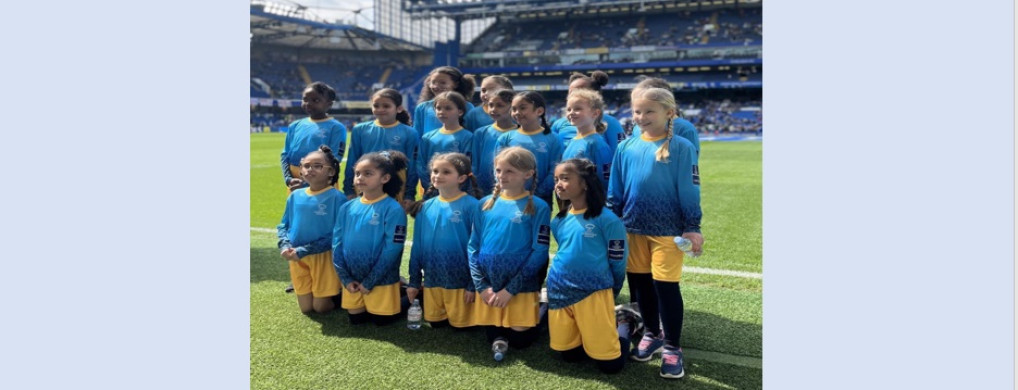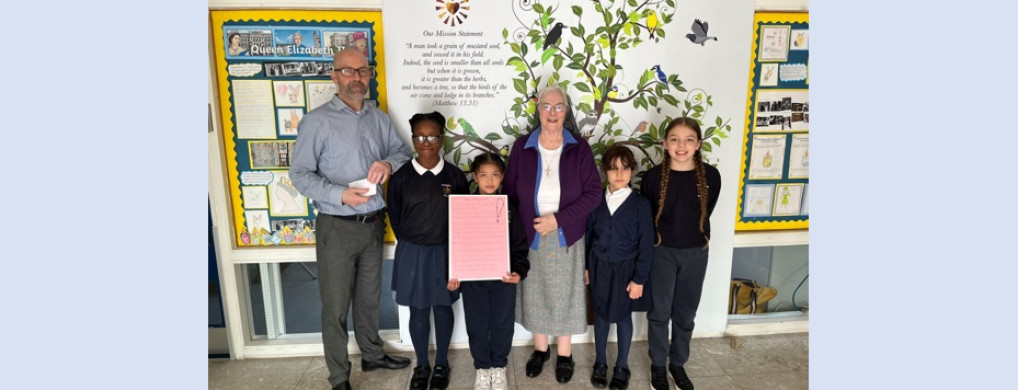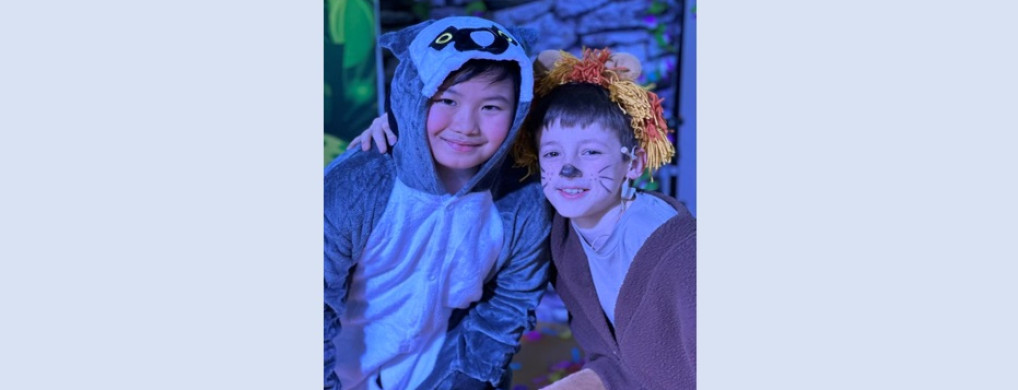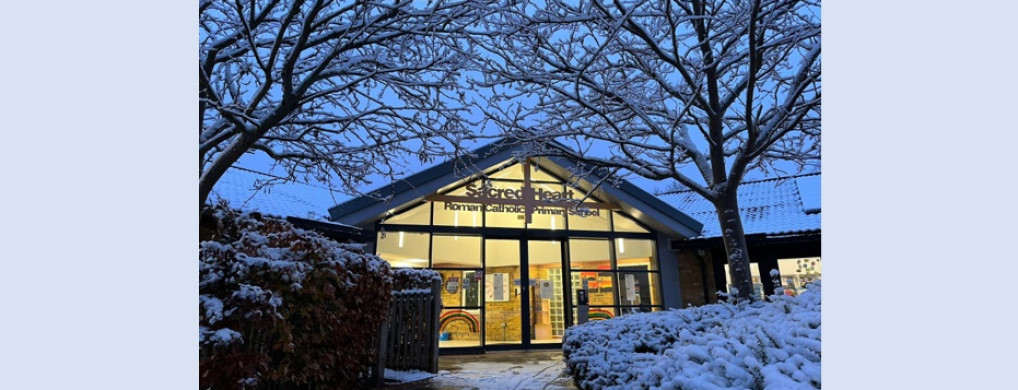Art and Design
Our Approach to the Teaching and Learning of Art and Design at Sacred Heart School
At Sacred Heart RC Primary School, we strive to create an Art curriculum that engages and inspires children to express their creativity and produce imaginative pieces of work. To teach the important skills necessary to contribute to a solid art understanding. Creativity and expression through Art begins in the Early Years and continues all the way up to Y6. In KS1 children are encouraged to experiment with materials and resources and become familiar with using them. In KS2, strengthening children’s artistic skills, from shading to painting is a focus to ensure high quality outcomes of final pieces.
Across Years 1 to 6, children learn and are influenced by various artists and craft makers from around the world, both past and present. Within Key Stage 2, our Art curriculum aims to equip children with the knowledge and skills to make informed choices, think critically of their own artwork and that of others, as well as building their confidence to work with increased independence. Not only is art an enjoyable subject, but it is accessible for all, especially for students with SEND needs. We ensure that all children are able to express themselves creatively by giving support, as well as encouraging confident artists to extend their artistic skills.
We follow the Kapow Art and Design scheme of work which fulfils the statutory requirements outlined in the National Curriculum (2014).
The National Curriculum for Art and Design aims to ensure that all Pupils:
- Produce creative work, exploring their ideas and recording their experiences
- Become proficient in drawing, painting, sculpture and other art, craft and design techniques
- Evaluate and analyse creative works using the language of art, craft and design
- Know about great artists, craft makers and designers, and understand the historical and cultural development of their art forms.
Art is taught as a discrete subject across the school, but where natural links arise, it is used to complement the wider curriculum. This allows children to make meaningful links, helping to strengthen and build connections with their learning. Local art events and artists are a feature of the art curriculum as are art competitions. Y5 held an exhibition of their artwork at Battersea Power Station for a Remembrance Service and Y4 presented their work at an exhibition in Southside Shopping Centre after working alongside the local service Creative Wandsworth. A group of KS2 pupils designed and made models to submit to the Mayor of London Fourth Plinth Schools Award 2023.
An external provider runs extra-curricular art clubs after school for KS1 and KS2 children.
EYFS Educational Programme – Expressive Art and Design
The development of children’s artistic and cultural awareness supports their imagination and creativity. It is important that children have regular opportunities to engage with the arts, enabling them to explore and play with a wide range of media and materials. The quality and variety of what children see, hear and participate in is crucial for developing their understanding, self-expression, vocabulary and ability to communicate through the arts. The frequency, repetition and depth of their experiences are fundamental to their progress in interpreting and appreciating what they hear, respond to and observe.
EYFS Educational Programme – Physical Development
Fine motor control and precision helps with hand-eye co-ordination which is later linked to early literacy. Repeated and varied opportunities to explore and play with small world activities, puzzles, arts and crafts and the practice of using small tools, with feedback and support from adults, allow children to develop proficiency, control and confidence.
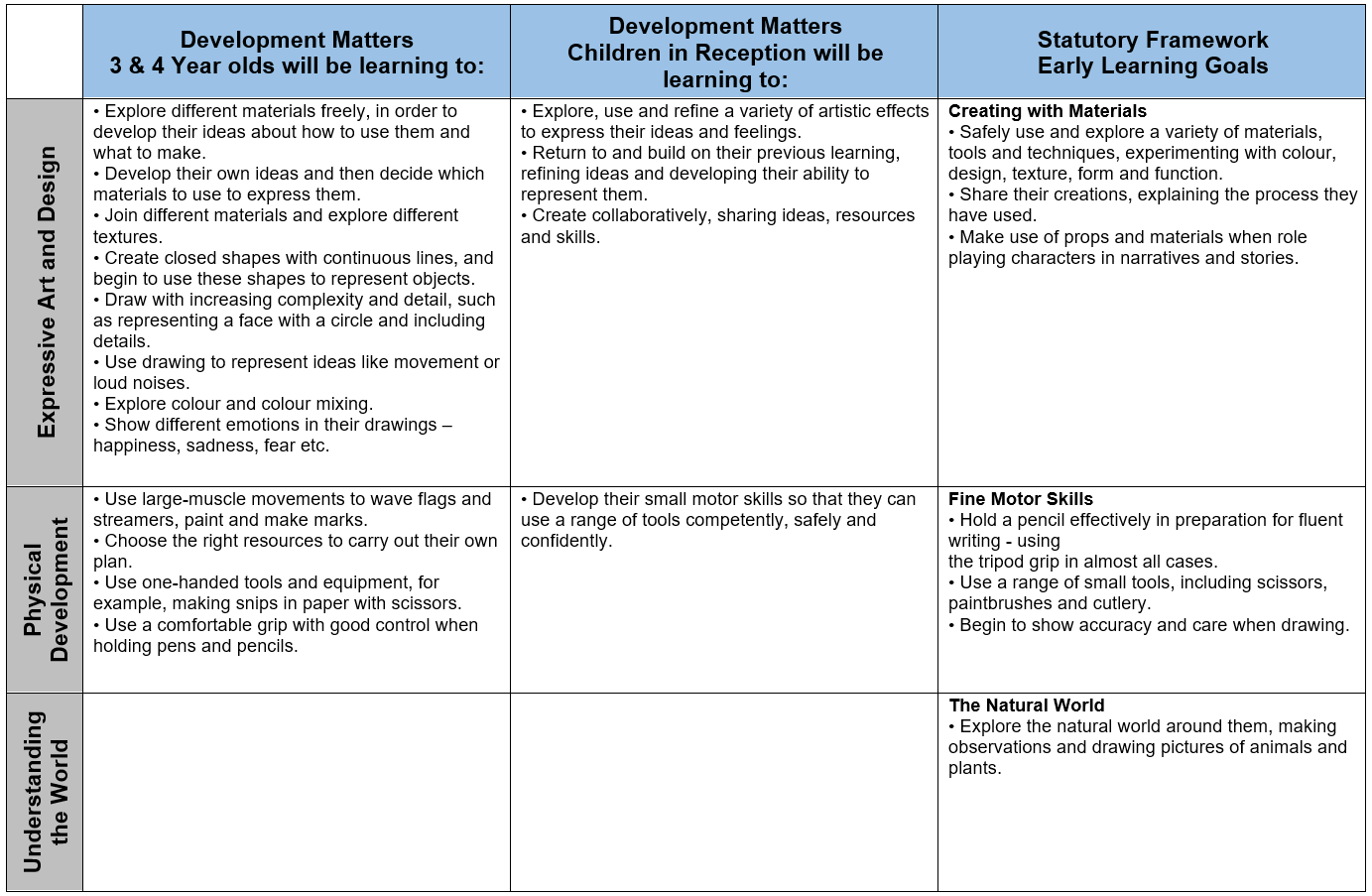
Art and Design Curriculum Road Map Reception – Year 6
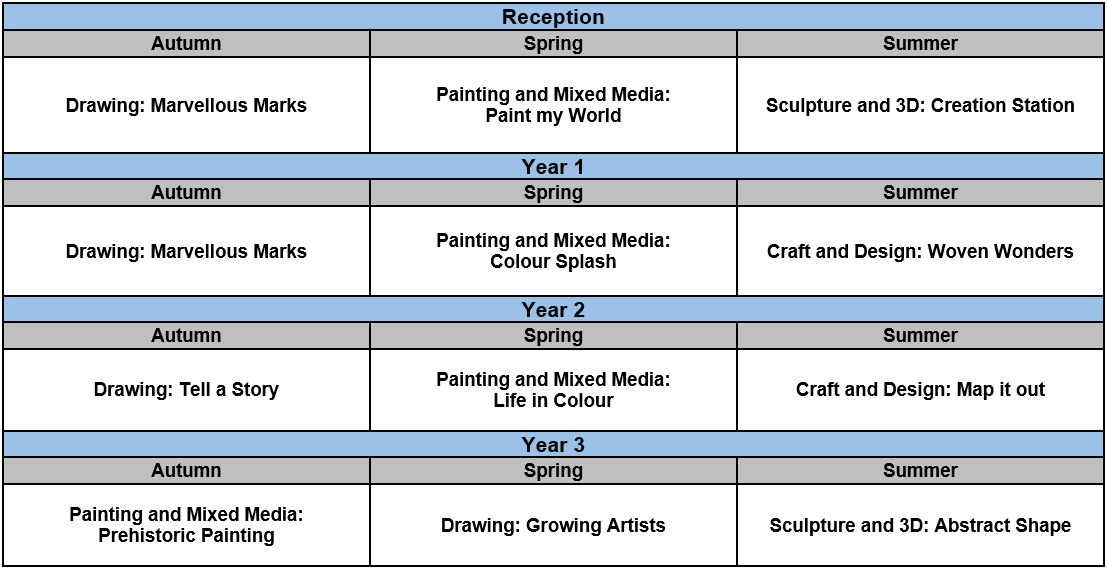
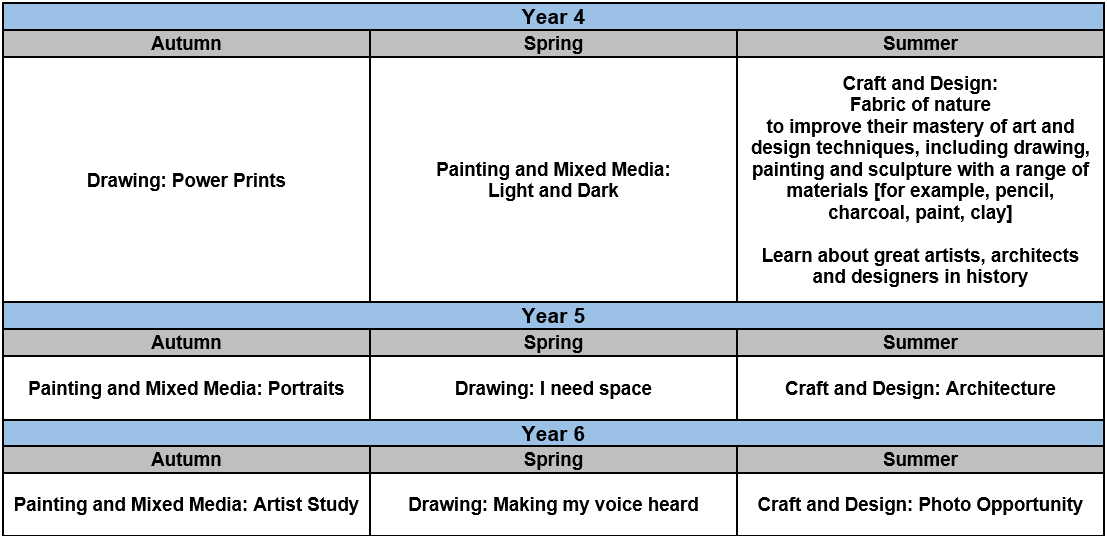
Art and Design Curriculum Milestones Reception – Year 6
